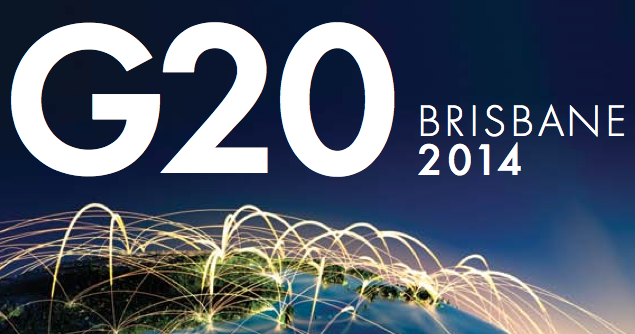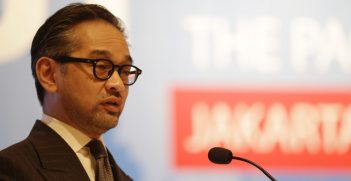The G20: Conundrums and Catch-22s

Allow more members, risk unwieldiness. Stay exclusive, face irrelevance. Aim too big, lose focus. Aim too low, lose sight of the big picture… To evolve into the forum of the future, the G20 must manage competing pressures and more, writes Professor Ramesh Thakur.
Post-GFC, the G20’s very composition positions it to be the potential future forum of choice for addressing the world’s problems – ones beyond global economic concerns. Whether it stands or falls depends ultimately on if the G20 leaders can work together to make the required commitments, hard decisions and big trade-offs. Its future is likely to be dim if it fails to control three critical items in particular: size, outreach and agenda.
Keep an Eye on the Size
The G20’s primary attractions as a summit forum are the involvement of government leaders of the world’s heavyweights and a relatively compact membership. No forum can guarantee resolution of clashing interests but an intimate yet representative group whose members get to know, understand and trust one another is likelier to succeed.
For example, the UN Security Council is the most powerful body in the world with the legal competence to decide on the great issues of war and peace. But its ossified permanent membership has left it badly misaligned with the changing power structure since 1945 – to the point where its authority, legitimacy and effectiveness are now gravely compromised. Conversely, while the G7’s membership remains tight and its leaders did reach deals on some key world problems in a highly personalised setting, as wealth and power has shifted from the West to key emerging economies, it too has suffered a steady erosion of authority, legitimacy and effectiveness.
Potentially, therefore, the G20 is the best mix of size, efficiency, representativeness, legitimacy and effectiveness. Representing two-thirds of the world’s total population, it accounts for 80–90 per cent of the world’s gross product, trade and economic growth. It is also broadly representative of the global diversity of power, wealth, poverty and values. G20 countries account for about half the world’s people living in absolute poverty, and include donors and recipients, the most populous countries and almost all regional heavyweights. Putting together GDP, population and regional weight, the G20 includes all nations with geopolitical clout.
The G20 is attractive also in how it augments the formal forums of organised multilateralism within an informal institutional setting for key players to engage each other directly and personally, minus the bureaucratic baggage of the UN or the political baggage of the international financial institutions (IFIs) That said, the G20 should have limited its membership. During the exploratory and advocacy years before 2008, various expert groups (of which I was part) had canvassed an optimum size of 14 (i.e. G8 plus Australia, Brazil, India, China, South Africa, and Mexico), or 15 (one Islamic country: either Egypt, Indonesia, Saudi Arabia or Turkey). But we concluded that for political sensitivity, it would be easier to convert the existing G20 Finance into a Leaders’ grouping.
What we failed to anticipate was the “gatecrashers” from so many regional and international organisations, plus selected host-government invitees, that have brought excess fat with little corresponding added value to the G20. The least it can do is to avoid any further enlargement.
Intensify Efforts to Include and Reach Out to Others
Because the G20 spans both the global North and South, it has a far better representational legitimacy than the G7 industrialised countries. But, because the G20 is not a formally mandated organisation, it cannot match the UN’s unique legitimacy and must still seek ratification of its informal collective agreements from the multilateral machinery. And because it embraces both North and South, it lacks the cohesiveness of perspectives, values and interests of either. Which is why it can complement but not substitute for the universal UN and IFIs.
To defuse criticisms that it is a self-selected exclusive club, G20 must complement its core composition with a consultative network. To give everyone a part stake, its governance model should be “consult and cultivate”, not “command and control”. Although it cannot be representative of smaller, deeply vulnerable, highly stressed countries and their populations, those excluded must be co-opted into the system so that their perspectives and interests are given voice. And as the contemporary web of global governance includes businesses and civil society organisations as actors, they too must be brought inside the tent through innovative institutional linkages.
Broaden the Agenda without Diluting Effectiveness
After the GFC, institutional innovation like the Leaders G20 was required to restore confidence and trust, put markets and the financial sector to the service of the public interest, and make globalisation work for people and not markets. The G20 – not the UN, IMF nor World Bank – took the lead in shifting more responsibility through greater voice and vote in the IFIs to emerging economies.
That said, if the G20’s defining characteristic is that established and emerging powers come to the table as peers, then the benefits and demands of such a grouping cannot be limited only to economic and financial sectors but must also embrace political, military and social policies.
Top-level issues suitable for future G20 discussion include development, food security and global health. Several different global threats – climate change, population growth and unsustainable use of resources – are converging and thereby intensifying the crisis of food security. The rapidity with which some diseases can spread to become global pandemics, the emergence of deadly new contagious diseases, the lack of border defences to protect against them, and the greater vulnerability of the poor owing to negligible preventive and therapeutic care are among the “dark” sides of globalisation.
Existing institutions have proven incapable of dealing with key global issues from financial crises to climate change, agricultural trade and nuclear threats. In a world in which all big-ticket problems are global but politics remain stubbornly local, the G20 is uniquely placed to bridge the global governance gap. This is why limiting future G20 summits’ agendas just to “global economic growth”, as with the Brisbane summit, would be too restrictive and short-sighted. Given Australia’s unique geopolitical identity in the G20 as a Western nation perched on the edge of Asia, Canberra should show more entrepreneurial leadership.
Of course the group should remain lean, focused, and disciplined with a tightly structured agenda. The temptation of agenda expansion has afflicted too many other “G” groups and organisations, at the cost of focus and impact. The G20 must avoid the “Christmas tree effect” whereby it is weighed down with too many items. The leaders should take up only those issues – and never too many at any one time – that are most pressing and can be shifted with heavy lifting by them.
The solution is for host nations to identify one core concern for each summit that goes beyond just economic matters. For example, given how Asia is the only continent where nuclear arsenals continue to expand (in China, India and Pakistan) and nuclear weapons are still being tested (North Korea), this would have been a good topic to put on the Brisbane agenda and ask why and what can be done about it.
Professor Ramesh Thakur is from the Crawford School of Public Policy, Australian National University
This is an extract from G20: Words into Action Brisbane 2014 published by Faircount Media in association with the Australian Institute of International Affairs in October 2014.





